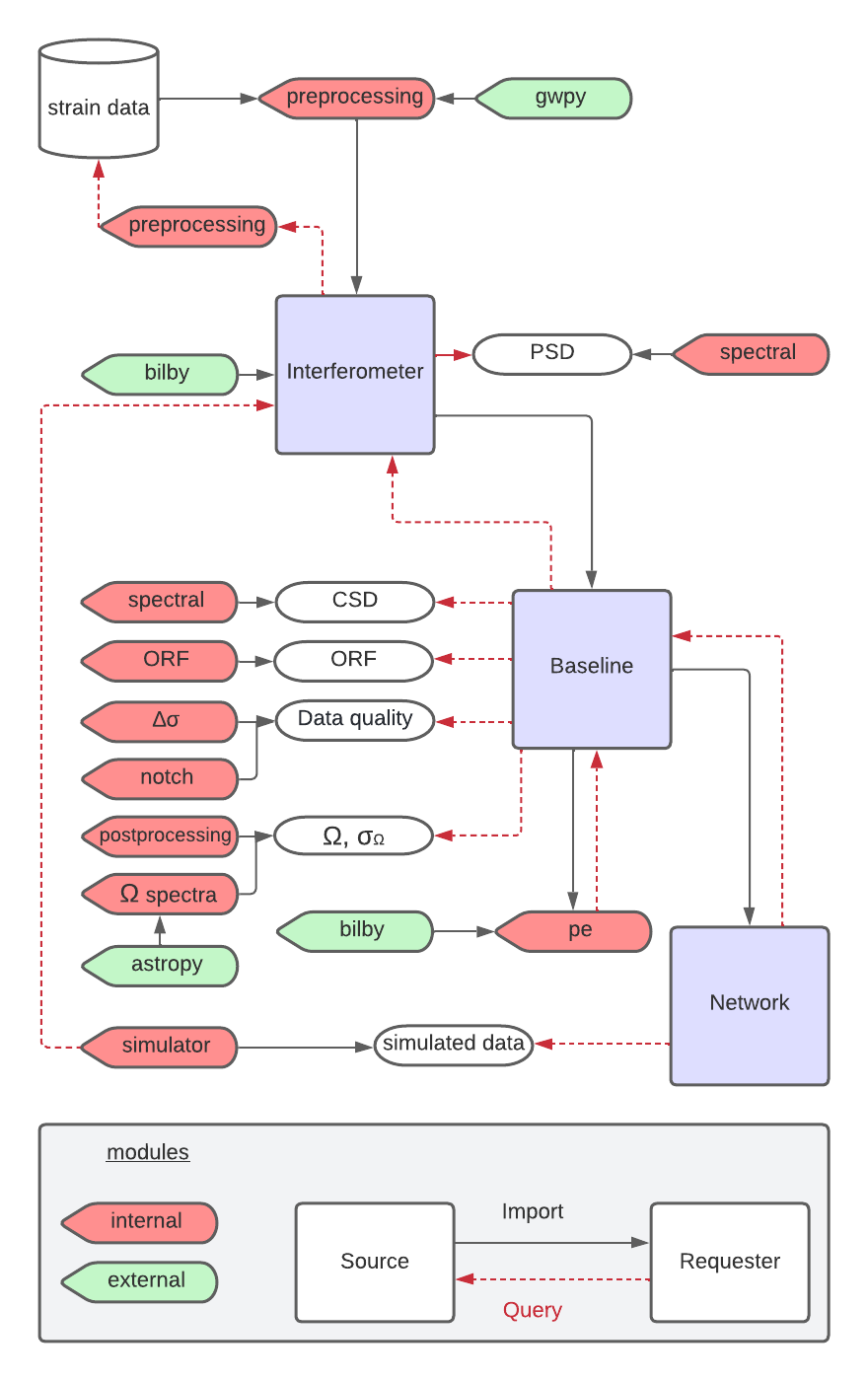API
The pygwb package consists of several modules, each with a distinct functionality. A summary of all pygwb modules, their interaction with each other, and the main external dependencies can be seen in the schema below.
This API section contains information about each of the modules, as well as a description of all methods therein. The module documentation can be accessed through the table below for each of the modules, or through the table of contents on the left hand side of the page.
See also
Additional information about each of the modules can be found in the pygwb paper.

The |
|
The |
|
The |
|
The |
|
The spectral module contains all functions in the |
|
The |
|
The postprocessing module combines all methods which are useful in the end stages of the analysis, more specifically when combining spectrograms into spectra, and spectra into one overall point estimate for the gravitational-wave background. |
|
This module contains two classes that deal with the spectra and spectrograms in the |
|
The |
|
The |
|
This module provides an easy-to-use tool to simulate data, both a stochastic gravitational-wave background, as well as individual compact binary coalescence waveforms. |
|
In general, the noise level in ground-based detectors changes slowly on time-scales of tens of minutes to hours. |
|
Realistic detector data will have noise lines and various other artefacts, which should not be included in the analysis (more information |
|
The |
|
The relative position and orientation of two detectors is taken into account by the overlap reduction function (ORF) in gravitational-wave background searches. |
|
Many parameters enter in a full gravitational-wave background analysis. |
|
The |